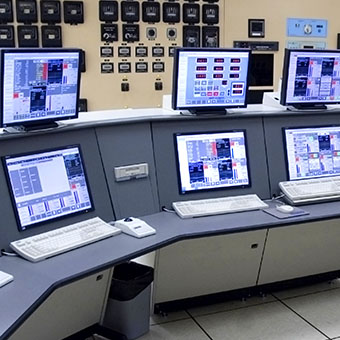We are one of the most renowned names of the industry engaged in offering a wide range of high quality Packaging equipment in the market. Our product range is made as per the exact demands of different industries and sectors. Moreover, we can customize the machines as per the specific demands of our esteemed clients. Our product range comprises Case packer, Liquid filling machines, Pallet strapping machine, Carton sealing machine, Cartoon erector, Palletizers
Packing Equipment
Soft starters will protect your electric motor from possible damage and at the same time extend the lifespan of your electric motor and the whole system by declining the heating caused by frequent start/stops, reducing the mechanical stress on the motor, its shaft and reducing the electrodynamic stresses on the power cables. Soft Starters are commonly used in industrial applications that have a high inertia load that requires a large inrush of current.
Various automation processes in the industry need control of AC induction motors using AC drives.AC induction machines are popular due to their simplicity, reliability, and direct operation from an AC line voltage. ACIMs are asynchronous machines and always have a lower mechanical rotor speed than the power line frequency. The principle of operation for an ACIM is based on the voltage induction from the stator to the rotor.

A VFD (Variable Frequency Drive), or rather a VVFD (Variable Voltage and Frequency Drive) is a precision electronic device specifically designed and used to control the speed of AC induction motors (single as well as three phase) without affecting the electric consumption, torque, impedance, magnetic flux, etc. of the motor. It is integrated to an operator interface for receiving the required speed control commands (using keypads). Why can’t VFDs be replaced by other straightforward means? The following discussion will provide the exact purpose of using VFDs to control AC motor speed.

Transcedence can match your specific equipment or process with the best process controls and automation system for your application. Our process experience and knowledge combine with our intimate familiarity with the latest control and automation components and software. We customize the solution to meet your exact requirements and needs. Whether you need to upgrade your present system to meet changing requirements, or need a fully automated control system for a new process application, we have the expertise in designing and building automation systems for customers

Distributed Control Systems (DCS) plays a vital role in manufacturing industries as they are used to control and manage the processes. The networking capabilities of DCS are useful in the process management and the inputs or resulted outputs can be an analog signal or discrete signal.
Distributed Control Systems are used merely in the innovative emerging process industries as an extension of traditional controllers. The major concept of distributed control systems application is derived from the idea of decentralizing the control unit and establishing a common network between the engineering stations.

SCADA stands for supervisory control and data acquisition. It is a type of software application program for process control. SCADA is a central control system which consist of controller’s network interfaces, input/output, communication equipment’s and software. SCADA systems are used to monitor and control the equipment’s in the industrial process which include manufacturing, production, development and fabrication. The infrastructural processes include gas and oil distribution, electrical power, water distribution. Public utilities include bus traffic system, airport. The SCADA system takes the reading of the meters and checks the status of sensors in regular interval so that it requires minimal interference of human.

A Human-Machine Interface (HMI) is a user interface or dashboard that connects a person to a machine, system, or device. While the term can technically be applied to any screen that allows a user to interact with a device, HMI is most commonly used in the context of an industrial process.
Although HMI is the most common term for this technology, it is sometimes referred to as
Man-Machine Interface (MMI), Operator Interface Terminal (OIT), Local Operator Interface (LOI), or Operator Terminal (OT). HMI and Graphical User Interface (GUI) are similar but not synonymous: GUIs are often leveraged within HMIs for visualization capabilities.

A programmable logic controller (PLC) or programmable controller is an industrial digital computer which has been ruggedized and adapted for the control of manufacturing processes, such as assembly lines, or robotic devices, or any activity that requires high reliability, ease of programming and process fault diagnosis.
The PLC receives information from connected sensors or input devices, processes the data, and triggers outputs based on pre-programmed parameters. Depending on the inputs and outputs, a PLC can monitor and record run-time data such as machine productivity or operating temperature, automatically start and stop processes, generate alarms if a machine malfunctions, and more. Programmable Logic Controllers are a flexible and robust control solution, adaptable to almost any application.
In today’s world of the Industrial Internet of Things (iIoT), and Industry 4.0 programmable controllers are called upon to communicate data via Web browser, connect to databases via SQL, and even to the cloud data via MQTT.





